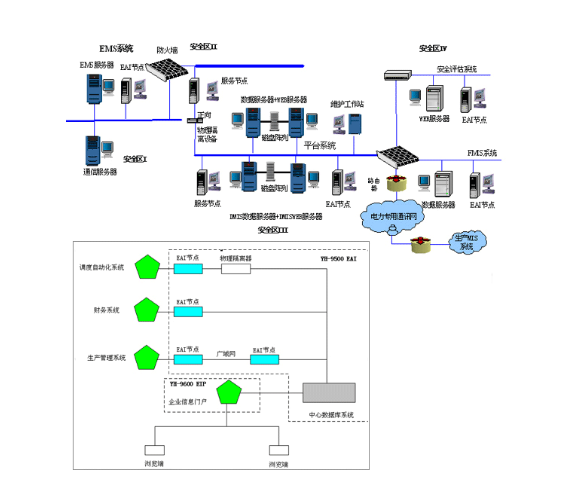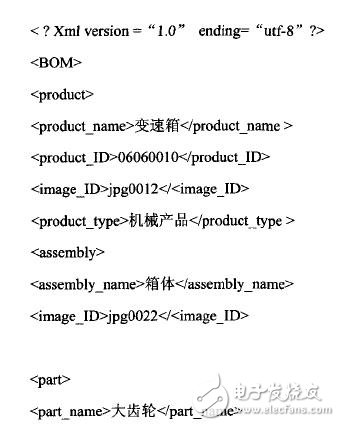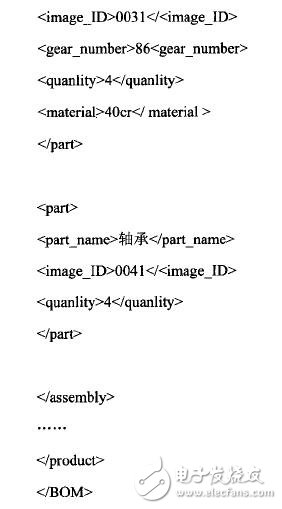A PLM-based manufacturing enterprise application system integration research process
With the development of information technology, manufacturing companies are undergoing tremendous changes. At present, more and more application softwares are used by manufacturing companies, such as CAX (CAD, CAM, CAPP, and CAE), PLM, and ERP technologies have also been continuously promoted and applied. These application systems have a heterogeneous environment for processing heterogeneous information in product definitions, process descriptions, and production controls, and store various data information in different physical systems, which makes them urgently required to implement each through a network. Enterprise application system integration, sharing and integration of information between enterprises. However, the information systems and databases of various companies are not the same, which brings problems to the sharing and exchange of information. For this purpose, this paper proposes an integration of inter-enterprise systems based on PLM to achieve enterprise information sharing and integration.

The application system integration of a manufacturing enterprise is based on the system integration of the information model of the product life cycle. All product data in the product life cycle are defined, and these data are separately stored in different application systems. In order for the product information model to be transparent to all users, these decentralized systems must be integrated as a whole. These systems mainly include CAX, PLM and ERP. The necessity for the integration based on the PLM system can be summarized as the following three aspects:
First of all, in the entire life cycle of the product, the focus of each system is different. The CAx system is mainly used for product design, analysis and manufacturing. The PLM system is used to manage product-related data and processes, while the ERP system is focused on implementing management. Enterprise resources such as people, finances, materials, and information, etc. Secondly, due to the different application scope and emphasis of these systems, the inconsistency of their information models has resulted in an “information isolated island†between application systems, and no enterprise information resources have been realized. To maximize the reuse and sharing, which is a waste of information resources for the enterprise; Finally, the enterprise to achieve product life cycle management is the main direction of enterprise information development. Any existing single system can not complete the entire product life cycle management of manufacturing companies, and therefore it needs to use the company's existing information resources for system integration, which is also an economically feasible approach.
2 Based on PLM application system integration framework2.1 System Integration Considerations
When an enterprise integrates application systems, it must not only consider the technical factors of the existing system, but also consider the organizational structure, staffing, technical conditions, and integration costs that the enterprise can afford. The higher the degree of integration, the higher the expense will be, and the greater the impact on the relevant business departments of the company. In general, system integration requires several considerations: The first is to define the data of an object. The definition and description of information in different application systems are not the same. The data needs to be defined and described uniformly. Second is the data control problem, which data is generated by which people. And who controls the information resources that need to be shared; the last is the implementation of heterogeneous computer application system integration.
2.2 Systematic Structural Framework
According to the different system integration methods, this paper presents the PLM application system integration framework. The following describes the system framework in detail.
The CAX system has the characteristics of diversity and heterogeneity, and the existing different PLM systems also adopt different system architectures and external interfaces. Therefore, it is necessary to adopt a web-based platform-independent technology to realize the integration of general CAX and PLM systems. Because WebService is completely independent of the Web platform, it defines the application programs to communicate with each other on the Web, and has nothing to do with the underlying implementation of each application, so choose the Web Service platform to achieve the integration of CAX and PLM systems. The platform-independent requirements make it necessary to shield the underlying implementation details of different systems. Different systems provide a unified call interface. The Facade design mode has the advantages described above. Therefore, the underlying interfaces of CAX and PLM systems are encapsulated into webs in Facade mode. The service shields the external interfaces of the underlying interfaces and exposes only the APIs needed to invoke each other. The PLM system can encapsulate the Web services of the CAX interface through Web calls. Conversely, CAX can also invoke PLM's WebService. Both of them call each other via the web. The relationship is equal. The PLM system and the CAX system are both the client and the server of the Web Service, and the client and the server communicate with each other using the SOAP protocol. The two systems use XML format for information exchange, each of which converts its internal data format into an XML data format transmission request through a data exchange encapsulation interface. After receiving the XML format data, it also receives the received XML through a data exchange encapsulation interface. The data is parsed into its own internal format.
The most important data integration between ERP and PLM integration is BOM. A product must undergo engineering design, process design, and manufacturing to form a final product. The BOM table also changes from the engineering BOM EBOM to the manufacturing BOM MBOM during the design process. In PLM, BOM is expressed in the form of product structure tree, mainly including material information and product structure information. These are the data that PLM needs to import into ERP. In ERP, the most fundamental role of BOM is to calculate material requirements, costs, and capabilities. The unified integration must first solve the BOM table inconsistent processing. We can establish an equipment BOM (ABOM) as an intermediate stage between the two, including not only product assembly documents, but also product process equipment, consumables, special tools, and technical documents. Because PLM and ERP often come from different manufacturers, the use of XML for BOM information delivery is an effective way. Through the APIs provided by the ERP system and the PLM system, information that the system needs to provide is imported or exported, and it is converted into a unified XML file for information transmission.
3 Key Technologies for System Integration3.1 Web Service Technology
Through Web services, companies can publish shared information and outsourced information to the public. The information can be used by Web applications and can also be used by other enterprise applications. Web service features are as follows.
1) Well-encapsulated, for the user, it can only see the list of features provided by the object.
2) Loose coupling For loose coupling, especially for Web services in the Internet environment, there needs to be a message exchange protocol suitable for the Internet environment. XML/SOAP is currently the most suitable message exchange protocol.
3) Software platform independence, highly integrated capabilities.
The Web Service platform was chosen as the integration platform for PLM and other system integration frameworks. The platform guarantees the dynamic connection between programs through a series of standards and protocols. The most basic protocols include: SOAP, WSDL, UDD I. SOAP (Simple Object Access Protocol) is a protocol for web services message communication and is the core content; WSDL (Web Services DescripTIon Language) is a web service definition language used to describe SOAP messages and how to exchange these messages; UDDI (Universal DescripTIon, Discovery, and IntegraTIon Universal Discovery, Description, and Integration) is used to centrally store and find WSDL description files, acting as a directory server. After encapsulating the underlying interface, the web service application is written on the unified high-level data exchange interface. Because different systems provide a unified high-level data exchange interface, Web Service only interacts with the high-level data interface, so you can write a generic Web Service. The program is applied to the integration of different CAPP and PDM systems. By composing common Web Service applications for PLM and other systems separately, each web service is invoked on the Web to achieve seamless integration of PDM and other systems.
3.2 XML Technology
Because CAX (CAD/CAM/CAPP) and ERP systems have different data formats, an intermediate common data format must be provided to achieve information integration between the two systems.
As an efficient, simple and highly open, compatible and cross-platform performance data storage and data exchange standard, XML has more and more demonstrated its strong superiority. The advantages of XML are:
(1) A good data format facilitates the design of markup languages ​​that are relevant to a particular field, and at the same time facilitates the exchange of data between heterogeneous systems.
(2) Good scalability and flexibility XML's extensibility and flexibility allow it to describe data in different kinds of application software, and it can integrate data from different sources to facilitate the establishment of data.
(3) The compression performance of XML is convenient for network transmission, and it will not add too much burden to the network transmission.
(4) Document highly structured XML uses custom identifiers to decompose a document into elements of a token with a certain meaning, and can attach additional information (attributes) to each element, thereby becoming a structured data structure. Because XML has so many advantages, choose XML as the intermediate format to realize the data exchange between PLM application system integration. Each independent system converts its own data into an intermediate format such as XML, and implements data exchange and information sharing through the integration framework, which realizes the platform-independent and powerful portability of the integration framework. We use the data exchange between CAPP and PLM system as an example to illustrate: CAPP and PLM systems exchange data in the form of BOM. CAPP obtains the EBOM and its attributes from the PLM system. The main exchange data between the CAPP system and the PDM system is the BOM (Bill Of Material, Bill of Materials) table. The CAPP obtains the design BOM and design attributes from the PDM, and the PDM obtains the technology from the CAPP. BOM and assembly BOM, product structure tree is the central content of the BOM. Here is an example of a product structure tree implemented in XML:


The data exchanged between systems is all encapsulated into XML format, and the XML format and internal data format are converted to each other through their respective data exchange and encapsulation interfaces.
4 ConclusionWith the further development of informatization, information integration in the manufacturing industry will become an imperative development trend. Making full use of limited enterprise resources and maximizing the use of various resources is also a must for every designer and enterprise manager. wish. Through PLM-based enterprise application integration, this article organically combines design, analysis, manufacturing, and management to achieve a certain level of information sharing and exchange. Due to the complexity of the system, there are still some aspects of this program, such as service security, that need to be further explored and studied.
Back Seat Headrest Pillow Phone Holder
Back Seat Headrest Pillow Phone Holder,Samsung Tablet Car Holder Back Seat,Car Back Seat Organiser With Tablets,Car Back Seat Tablet Holder
Ningbo Luke Automotive Supplies Ltd. , https://www.car-phone-holder.com